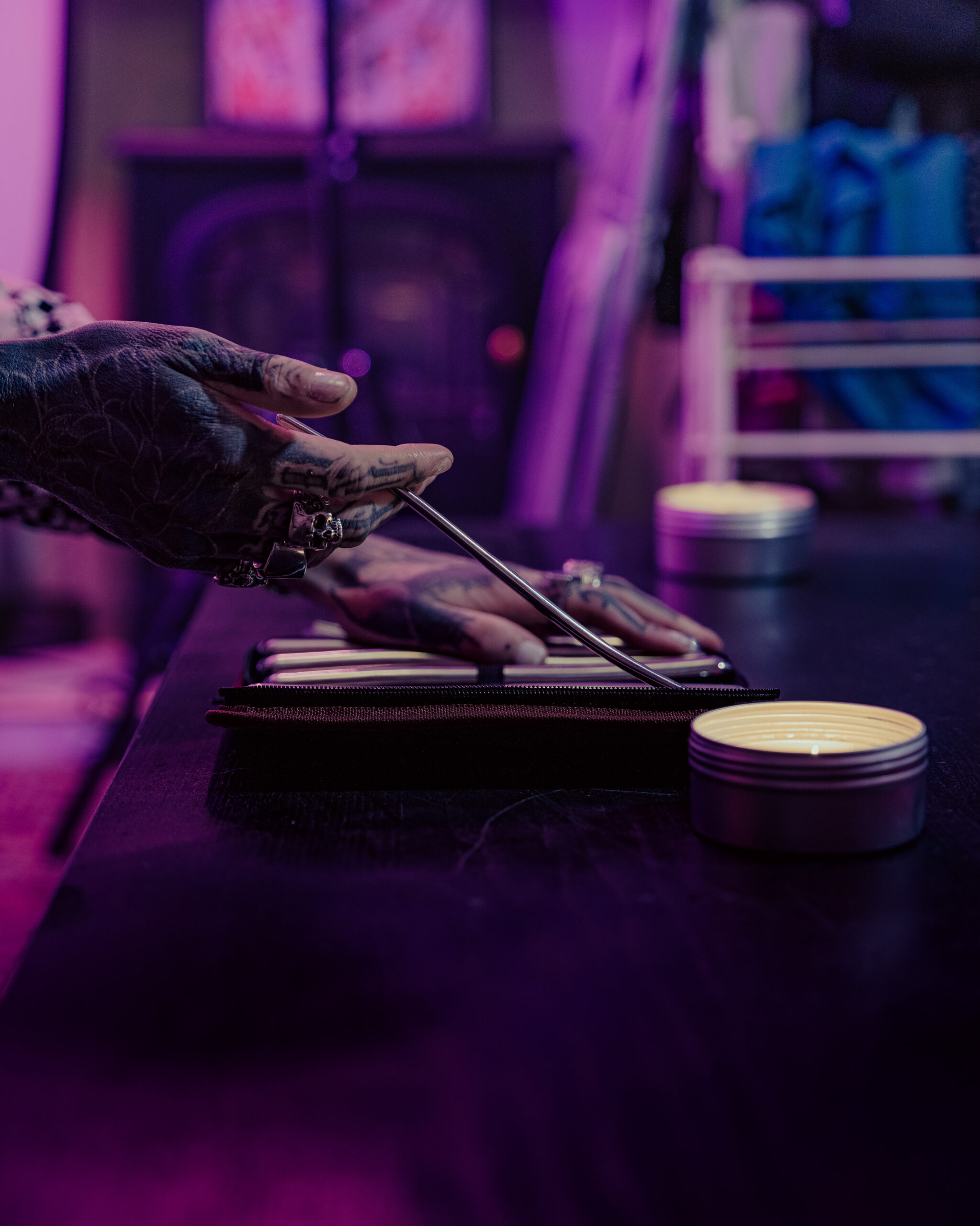How Technology Shapes Conversations Around Sexual Orientation And Relationships
Stigma and Shaming

The ways we think, feel, and behave about sexual orientation and relationships are deeply influenced by societal attitudes and norms. Two significant forces that shape these conversations are stigma and shaming.
Language Used to Describe Non-Heterosexual Relationships
The way we describe non-heterosexual relationships in language can be a complex issue, often tied to broader social attitudes towards sex and identity. Stigma and shaming are two common concerns that emerge when discussing non-normative sexual orientation and relationship dynamics.
- Language that pathologizes or dehumanizes same-sex attraction and relationships is a significant contributor to stigma. Terms like “deviant” and “mentally ill” have been used in the past to describe individuals with same-sex attractions, perpetuating negative stereotypes.
- The use of euphemisms like “gay” or “lesbian” can be seen as a way to mask or downplay the significance of non-heterosexual relationships, rather than acknowledging and discussing them openly.
- Binary language that assumes heterosexuality is the norm can also perpetuate stigma. For example, asking someone if they are “single” or “in a relationship” implies that there are only two acceptable options, ignoring the diversity of non-heterosexual relationships.
A shift towards more inclusive and respectful language is necessary to reduce stigma and promote understanding. Using person-first pronouns like “person with a same-sex attraction” can help to create a more neutral tone, while avoiding assumptions about an individual’s sexual orientation or relationship status.
Mediation by Technology
Meditation by technology has revolutionized the way we approach sensitive topics, including conversations around sexual orientation and relationships. With the rise of digital communication platforms, online forums, and social media, people are now able to connect with others from diverse backgrounds and share their experiences in ways that were previously unimaginable. However, this increased accessibility also raises important questions about how technology shapes our discussions and interactions around these topics, and whether it ultimately promotes greater understanding or perpetuates division.
Cyberbullying and Online Harassment
Mediation by technology has transformed the way we navigate conflicts, including those related to sexual orientation and relationships. The internet and social media have created new avenues for people to express themselves, connect with others, and engage in dialogue around sensitive topics.
- Online mediation platforms provide a safe space for individuals to discuss their feelings and concerns about their sexual orientation or relationships without fear of judgment or retribution.
- The anonymity offered by the internet can sometimes facilitate more honest and open discussions, but it can also lead to a lack of accountability and empathy from others involved in the conversation.
Cyberbullying and online harassment pose significant challenges to healthy conversations about sexual orientation and relationships. The use of technology has enabled people to anonymously or pseudonymously express hate-filled messages, which can have severe consequences for victims’ mental health and well-being.
Online harassment can take many forms, including homophobic slurs, transphobic remarks, and threatening language. It’s essential to recognize the impact that these behaviors have on individuals and communities, particularly those already marginalized or vulnerable.
- Social media companies have a responsibility to protect their users from online abuse and harassment, but effective moderation is a complex task, especially when dealing with sensitive topics like sexual orientation and relationships.
Culture Representation
Conversations around sexual orientation and relationships have long been shaped by societal norms, cultural values, and power dynamics. However, the rise of technology has revolutionized the way people interact with each other, creating new spaces for connection, community, and self-expression. As social media platforms, online forums, and digital tools continue to evolve, they are increasingly influencing how individuals perceive, discuss, and navigate their sexual orientation and relationships.
Diversity in Media Portrayals
Representation in media is crucial for shaping public perceptions and promoting understanding of diverse groups, including those from the LGBTQ+ community.
The lack of representation can lead to marginalization, erasure, and stigmatization of certain identities. In contrast, inclusive representation can foster empathy, acceptance, and positive attitudes towards diversity. However, the current state of media representation is often inadequate, with underdeveloped or stereotypical portrayals of LGBTQ+ characters.
Studies have shown that increased representation in media leads to increased empathy and reduced prejudice among viewers. For example, a study on LGBTQ+ representation in TV shows found that viewers who saw positive representations of LGBTQ+ characters were more likely to report increased support for LGBTQ+ rights and decreased prejudice towards the community.
The impact of technology on media consumption is also significant, as it has democratized access to information and provided new platforms for creators to showcase diverse stories. Social media and streaming services have created opportunities for marginalized voices to be amplified, but they have also been criticized for perpetuating stereotypes and reinforcing existing power dynamics.

To create meaningful representation in media, it is essential to prioritize diversity and authenticity behind the camera as well as on screen. This includes hiring diverse writers, directors, and actors, as well as creating nuanced and complex characters that reflect the full range of human experiences.
Relationships and Family
Relationships and family are fundamental aspects of human experience, providing emotional support, practical assistance, and a sense of belonging. In recent years, technological advancements have dramatically altered the way people interact with each other, including those within their intimate relationships and families.
The impact of technology on conversations around sexual orientation and relationships is multifaceted and complex. Social media platforms, online forums, and dating apps have created new avenues for individuals to connect, express themselves, and share their experiences. However, these digital spaces also raise important questions about the nature of intimacy, identity, and community.
Furthermore, technology has increasingly become an integral part of family dynamics, with many people relying on digital communication tools to stay connected with loved ones who live far away or whom they may not otherwise have time to see regularly. While technology can facilitate greater connectivity, it also presents challenges related to privacy, boundaries, and the blurring of physical and emotional distances.
As technology continues to evolve and shape our interactions, it is essential to examine its effects on conversations around sexual orientation and relationships. By doing so, we can gain a deeper understanding of how these changes are influencing societal attitudes, personal identities, and community norms.
Online Communities for Support

Online communities have become an essential aspect of modern relationships, providing individuals with a safe space to connect, share experiences, and seek support. For those exploring their sexual orientation or navigating complex relationship dynamics, online platforms can offer invaluable resources and connections.
These online communities often serve as virtual hubs for individuals to share their stories, receive validation, and form meaningful bonds with others who understand their unique experiences. Social media platforms, forums, and specialized websites dedicated to LGBTQ+ issues have created a sense of belonging and connection among those who may feel isolated or marginalized in their everyday lives.
However, the rise of online communities has also raised important questions about the intersection of technology and relationships. How do digital interactions impact our emotional well-being? Can online connections substitute for face-to-face interaction, or are they merely a supplement to in-person relationships?
Furthermore, the abundance of information available online can be both a blessing and a curse. While it provides access to valuable resources and support groups, it also raises concerns about the spread of misinformation and the homogenization of diverse perspectives. As technology shapes our conversations around sexual orientation and relationships, it is essential to consider the complex dynamics at play and strive for a more nuanced understanding of the digital age.
Ultimately, online communities offer a unique opportunity for individuals to connect with others who share similar experiences and emotions. By acknowledging both the benefits and limitations of technology in shaping our conversations around relationships and identity, we can work towards creating inclusive, supportive environments that foster growth, self-acceptance, and understanding.
Education and Awareness
The role of technology in shaping conversations around sexual orientation and relationships has become increasingly significant in recent years. With the rise of social media, online forums, and other digital platforms, people are now more connected than ever before, yet also more exposed to diverse perspectives and information.
Critical Thinking in Conversations
The way we converse about sensitive topics such as sexual orientation and relationships has undergone significant changes with the rise of technology. Social media platforms, messaging apps, and online forums have become breeding grounds for discussions, debates, and miscommunications. This shift towards digital communication has both positive and negative effects on education, awareness, and critical thinking in these conversations.
On one hand, technology provides unprecedented access to information and diverse perspectives, allowing individuals to engage with diverse voices and experiences that might have been previously inaccessible. For instance, social media platforms like Instagram and Twitter often feature stories of the LGBTQ+ community, fostering a sense of visibility and connection among individuals who may feel isolated or marginalized.
- However, technology also poses significant challenges in promoting education, awareness, and critical thinking around sexual orientation and relationships. Online echo chambers can amplify biases and misinformation, while algorithm-driven news feeds often prioritize sensationalist content over nuanced discussions.
- Furthermore, the ease of anonymous posting on online forums can lead to a lack of accountability, making it difficult for individuals to engage in respectful and fact-based conversations.
In order to harness the benefits of technology while mitigating its drawbacks, it’s essential to cultivate critical thinking skills in digital conversations. This involves recognizing the potential biases and limitations of online sources, engaging in empathetic listening, and actively seeking out diverse perspectives and expertise.
Evolving Language and Identity

The landscape of human communication has undergone a profound transformation with the advent of technology, leading to a paradigm shift in how we navigate conversations around sensitive topics such as sexual orientation and relationships. Language, once a static construct, has evolved to become a dynamic and adaptive tool that is increasingly shaped by technological advancements.
Labeling and Self-Identification
The evolution of language around sexual orientation and relationships is deeply intertwined with the technology that shapes our interactions and perceptions.
As societal attitudes towards diversity, inclusivity, and identity continue to shift, language adapts to reflect these changes. The rise of social media platforms has given voice to marginalized communities, allowing them to express themselves and connect with others in ways previously inaccessible.
Labeling and self-identification have become increasingly important aspects of this evolution. Terms such as “queer,” “non-binary,” and “pansexual” have gained widespread recognition, providing individuals with the language tools necessary to describe their identities and experiences.
This shift towards greater self-expression has not only enabled individuals to more accurately represent themselves but also fostered a culture of acceptance and understanding. As a result, conversations around sexual orientation and relationships are becoming increasingly nuanced, acknowledging the complexity and diversity of human experience.
LGBTQ+ Advocacy
The conversation around sexual orientation and relationships has undergone significant transformations, largely influenced by technological advancements in communication and social media. As people become increasingly connected through the internet and mobile devices, the way they express themselves, form connections, and access information about LGBTQ+ issues is changing rapidly.
Campaigns and Activism
The advancement of technology has profoundly impacted conversations around sexual orientation and relationships, particularly within the LGBTQ+ community. Social media platforms have become vital tools for LGBTQ+ individuals to connect with one another, share their stories, and raise awareness about issues that affect their lives.

Online campaigns and activism have also played a significant role in shaping these conversations. The rise of hashtags such as #LoveIsLove and #EqualityForAll has allowed LGBTQ+ individuals to mobilize and demonstrate their support for the rights and recognition of their community. Additionally, social media has enabled activists to disseminate information and resources about issues like transgender rights, reproductive justice, and racial equality within the LGBTQ+ community.
Moreover, technology has facilitated the growth of online communities and forums where LGBTQ+ individuals can share their experiences, seek support, and find resources. These digital spaces have helped to create a sense of connection and belonging among marginalized populations, who often face significant barriers in accessing traditional forms of support and services.
Furthermore, the proliferation of digital tools and platforms has also enabled LGBTQ+ advocacy groups to engage in more targeted and effective campaigns. For example, online petitions, email marketing, and social media advertising have become powerful means of mobilizing public opinion and pressure governments to enact policies that promote LGBTQ+ rights and recognition.
In recent years, there has been a growing focus on using technology to address specific issues affecting the LGBTQ+ community. For instance, apps like Tinder and Grindr have been criticized for their impact on LGBTQ+ relationships and communities, while others like Scissr and OkCupid have sought to create more inclusive spaces for queer women.
Overall, the intersection of technology and LGBTQ+ advocacy has created new opportunities for mobilization, awareness-raising, and community-building. However, it also raises important questions about the role of digital technologies in shaping conversations around sexual orientation and relationships, and the need for ongoing critical evaluation and consideration of these issues.
Conclusion
The conclusion serves as the final stage of exploring how technology influences conversations surrounding sexual orientation and relationships. By examining the impact of digital platforms, social media, and online spaces on the discourse around these topics, it becomes apparent that technology not only reflects societal attitudes but also plays a significant role in shaping them.
Buy Black Level products for a daring, bold experience at Peaches and Screams Shop Utensil Race for playful and creative adult products at Peaches and Screams Explore You2Toys for high-quality and affordable pleasure products at Peaches and Screams Shop large and extra-large condoms at Peaches and Screams Shop Christmas lingerie for festive fun at Peaches and Screams Explore Master Series toys for advanced pleasure and BDSM play at Peaches and Screams
Classy Pleasure Carmen Alexandra Hopeless Book Line the Studio
- Why CBD Gummies Are Popular For Reducing Chronic Pain - November 10, 2025
- What Is The Best Lip Filler To Use - November 8, 2025
- What Are The Benefits Of Full-Spectrum CBD Gummies For Mental Health - November 7, 2025